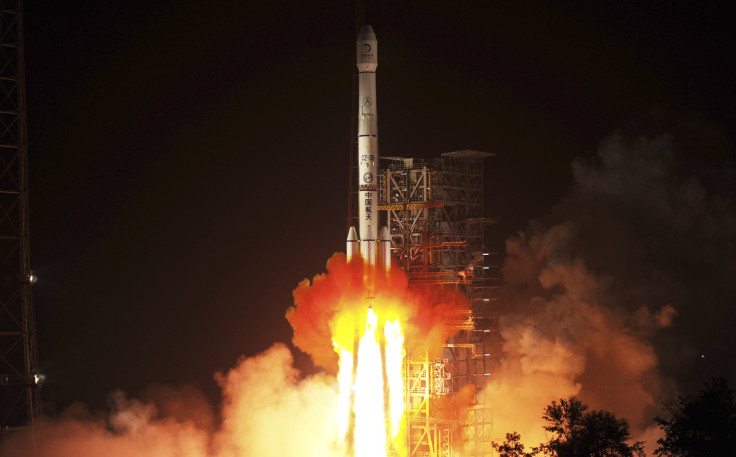China’s ‘Jade Rabbit’ Heads To Moon: Country’s First Rover To Land On Lunar Surface In Mid-December

China successfully launched Monday the country’s first probe to land on the moon, and when the probe touches down, China will become only the third nation in the world to send a robotic rover to the lunar surface, after the U.S. and Russia.
The Long March 3B rocket, carrying the Chang'e 3 lunar lander dubbed "Yu Tu", or “Jade Rabbit,” took off from the Xichang satellite launch center in southwest China at 1:30 a.m. local time (12:30 p.m. EST, Sunday). According to officials, the rover will land on the moon's Bay of Rainbows in mid-December, and will survey the moon’s geology and natural resources.
“We will strive for our space dream as part of the Chinese dream of national rejuvenation,” Zhang Zhenshong, director of the Xichang Satellite Launch Center, told the Xinhua state news agency.
If successful, the spacecraft will become the first to visit the moon since the Soviet Union performed a soft landing of its Luna 9 spacecraft on the moon in 1976. The mission represents the second stage of China's lunar program. It follows the successful launch of the Chang'e 1 and Chang'e 2 missions in 2007 and 2010.
China, which conducted its first manned docking mission in June 2012, is planning yet another robotic probe to gather lunar samples by 2020. China is also considering a manned mission to the moon in the future.
“China’s space exploration will not stop at the moon,” Sun Huixian, deputy engineer-in-chief in charge of the second phase of China’s lunar program, told Xinhua. “Our target is deep space.”
According to Chinese scientists, there could be other treasures on the moon, such as rare metals and Helium-3, which is considered as a potential fusion energy source.
“Now nobody is exploiting the resources because the economic costs are too high,” Ouyang Ziyuan, of the Chinese Academy of Science, told Xinhua. “This is a possibility in the future, and humans should know what is there on the moon.”
However, some U.S. scientists argued that the Chinese mission is not likely to unearth much to add to what is already known about the moon.
The Washington Post reported an unnamed U.S. scientist as saying that the Chinese rover’s design was similar to NASA’s Mars Exploration Rover, and many instruments, including the Chinese radar system, were similar to those used on previous space missions from the U.S. and Russia.
Li Benzheng, deputy commander-in-chief of China's lunar program, told media that China's space exploration does not aim at competition.
© Copyright IBTimes 2024. All rights reserved.












